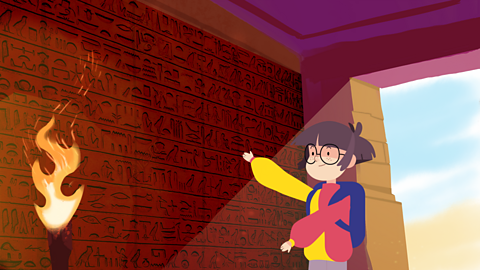Watch: Life in Ancient Egypt
Child: A head rest for sleeping. That looks really uncomfortable!
Ancient Egyptian child: It’s not that bad. Anyway, what would you use?
Child: Uhh… a pillow maybe?
Ancient Egyptian child: A what? Oh, never mind! I’ve got to get to work.
Child: Work? Seriously? How old are you?
Ancient Egyptian child: Twelve.
Everyone ‘round here starts work at my age. What’s your job?
Child: I don’t have one. I’m at school.
Ancient Egyptian child: Wow! You can actually read and write?
Only people like Priests, Scribes and Royalty learn to do that!
We’re farmers, so we’re too busy working in the fields to be learning.
We do proper work!
Child: Oh, I see.
Mum: Are you nearly ready?
Ancient Egyptian child: Just putting my makeup on!
You could do with some makeup too!
Mum, have you got my lunch?
Mum: I’ve got some fresh bread from the oven, and some garlic and some grapes.
Here you are my little kitten!
Ancient Egyptian child: …Mum!.. You ready?
Child: Ready for what?
Ancient Egyptian child: Working in the fields, it’s harvest time!
Child: Yeah sure… uh… I need the loo.
Ancient Egyptian child: No problem! Here you go.
Child: Woah!
Ancient Egyptian child: I know, it’s the latest model!
You can take the bowl out from underneath, and chuck everything away!
Child: …Uhh… Great. Does everyone here farm?
Ancient Egyptian child: Our way of farming is so efficient, not everyone has to help grow crops!
We have people like Merchants, Builders and Doctors here too!
Child: Wow!
Ancient Egyptian child: I know, have you ever seen so much barley?
The harvest is going to be amazing this year!
Child: Yeah, it’s going to be great!
What jobs did people have?

There was a large variety of jobs in Ancient Egypt. There were:
- Bakers
- Scribes
- Priests
- Doctors
- Craftspeople
- Merchants
Jobs were usually inherited from your parents – if your father was a farmer, it would be very likely that you would become a farmer too.
Women had special rights, able to own property, work in trade and run farms alongside their husbands. Marriage was important and women were respected as mothers and wives. People divorced and remarried.

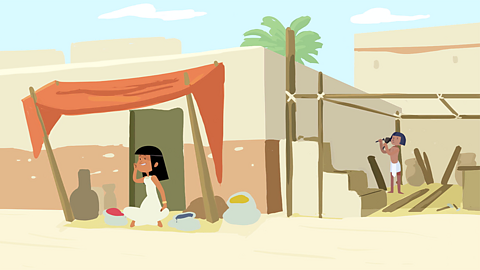
There weren’t schools like the ones we have today, but ancient Egyptians did have apprenticeships. This meant that many children had jobs or were learning a trade.
Enslaved people worked as forced labour but also in trades. Some were able to own property and were paid in food not wages.
How important is Deir-el Medina?
After Tutankhamen’s tomb was discovered in 1922, work began excavating (digging up) an entire village at Deir-el Medina, near the Valley of the Kings. This gave us the most detailed information we have of life in an Ancient Egypt from 1500 BC.
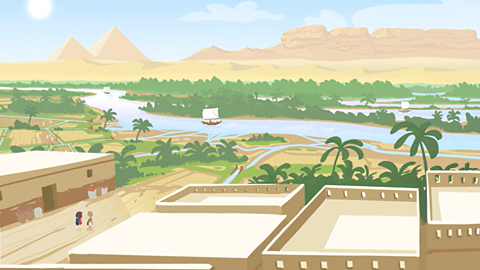
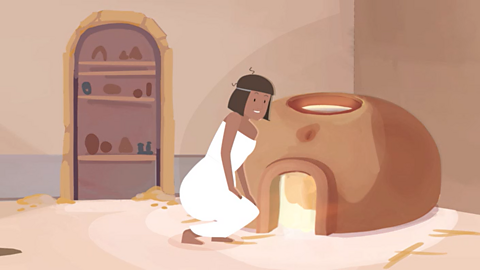
There were around 68 houses, made of mud-brick built on stone foundations. Letters, legal documents, statues and tombs tell us about family and working life. Many of the men and women could read. Women baked bread and brewed beer.
The village had a court of law and everyone had a right to a trial. There was a local police, the Medjay, to keep order. The people of Deir-el Medina also had medical treatment. They could get prescriptions of ingredients, prayers and spells from the physicians (doctors).

What were ancient Egyptian houses like?
Not many examples of ancient Egyptian houses have survived because they were built a very long time ago.
Houses would have been built of mud-bricks with floors made from earth. They had living rooms, kitchens and bedrooms.
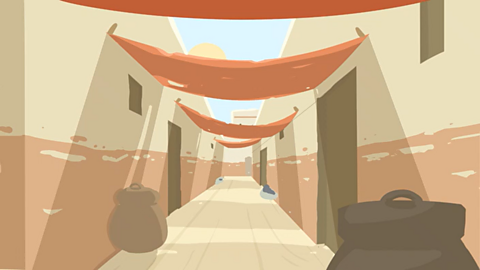
Many of the large objects that we can move around (like seats and ovens) were built into the house. There was no gas or electricity, meaning that food was cooked in stone ovens, using a fire for heat. To keep food and drinks cool, pits were dug and food was stored below ground level.
Items from ancient Egyptian homes
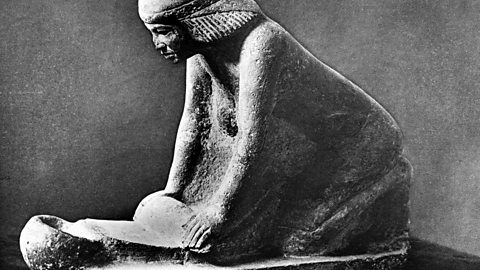
Image caption, Querns
The ancient Egyptians used stone querns like this to grind wheat into flour.
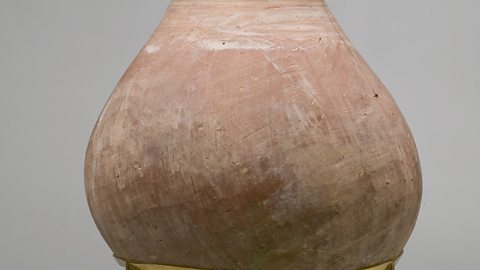
Image caption, Pots
Clay pots were used for storing things like water, beer and food.
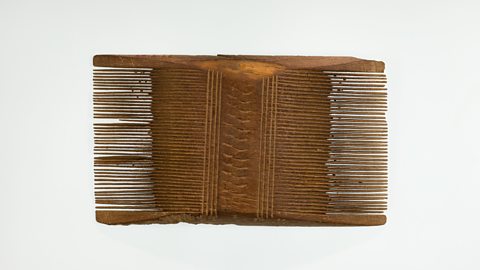
Image caption, Combs
Just like a modern comb, these were used for brushing hair. Combs could be made of different materials. Some combs were made of hippopotamus ivory!
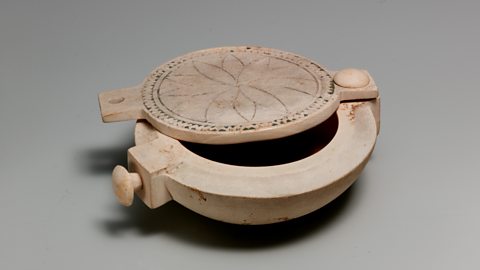
Image caption, Cosmetics
Pots like these were used to store make-up and cosmetics. Ancient Egyptians decorated their eyes with black kohl eyeliner. Both men and women painted their eyes.
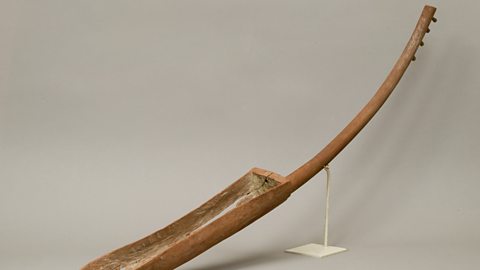
Image caption, Music
The ancient Egyptians loved to play music with instruments like this harp. Harp players would accompany a singer to perform songs.
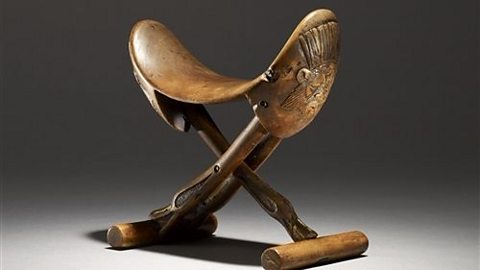
Image caption, Headrests
There were no pillows in Ancient Egypt, to get comfortable wooden headrests like this were used.
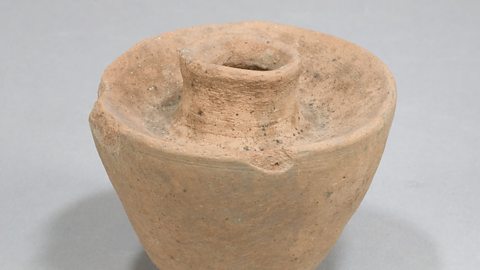
Image caption, Lamps
Lamps in Ancient Egypt burnt oil made from plant sources such as castor, sesame or linseed. Wicks were made from plant fibres or linen cloth.
1 of 7
What food did the ancient Egyptians eat?
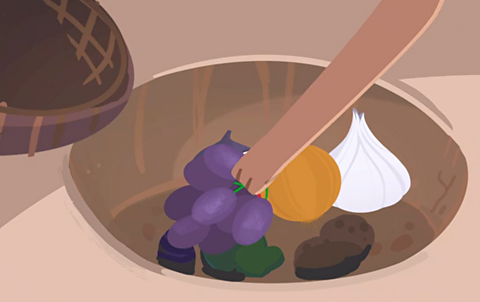
The area around the river Nile was very fertile, thanks to the annual flood. This meant lots of different foods could be grown and harvested.
Common foods we eat today, like tomatoes, bananas, and potatoes were not eaten in Ancient Egypt as they had not yet been discovered.
The food you ate depended on your class. Richer people (like priests and pharaohs) ate meat, eggs, figs and grapes. Poorer people, like farmers, ate bread and onions. Everyone loved garlic.

Activities
Activity 1: Ancient Egyptian villages
Click the labels below to find out about life in Ancient Egypt.
Activity 2: Ancient Egyptian food
It's time to pack your lunch bag. Sort the foods below.
Activity 3: Quiz – Life in Ancient Egypt
SAT’s preparation resources. activitySAT’s preparation resources
Get ready for the SATs papers with videos, activities, quizzes and games to refresh your knowledge and practise your skills.

More on Ancient Egypt
Find out more by working through a topic
- count6 of 18

- count7 of 18
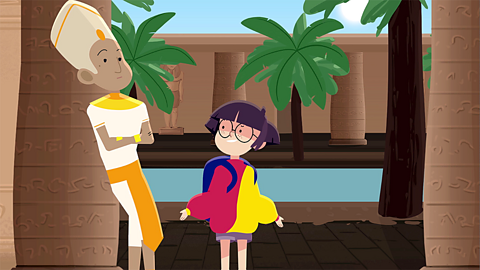
- count8 of 18
